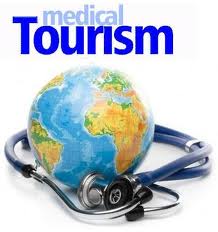 Medicine is being globalized like every other business, and as it does, it is giving new life to medical tourism.
Medicine is being globalized like every other business, and as it does, it is giving new life to medical tourism.
Traditionally, quality medical care was lacking in third world countries and patients would travel to first-world nations, like the United States, for higher quality medical care. With the globalization of medicine, the quality of care in second and third world countries can be comparable to that found in the U.S. As a result, Americans are traveling internationally for health care. It 2008, it is estimated that over 1 million Americans sought elective medical treatment outside the US.
Motivations for this change besides comparable medical quality include convenient timing, low travel costs, and most importantly,lower health care costs. A rapid Google search show that a hip replacement that costs $48,000 in the U.S. might cost only $8,000 in India. In essence, patients are "outsourcing themselves" to achieve first world care at third world prices. From a purely economic standpoint, medial tourism makes the most sense when there is a greatest disparity between the cost of the operation in the US compared to the price overseas. Such a disparity is most frequently seen in joint replacement procedures and procedures for weight loss. Traveling for relatively low-cost plastic surgery procedures, like breast augmentation, makes less sense.
While the upside of medical tourism can be substantial, medical tourism for many is an economic and health care gamble. Traveling presents the first obstacle. Long-distance air travel following surgery greatly increases the normal risks of deep-venous thrombosis (DVT) and pulmonary embolism. This risk can be diminished by delaying travel for a week or so, but this increases costs and thus defeats a central purpose of the travel.
While quality medical care is available overseas, it is not as much a certainty as it is in the US. While some take these instituitions for granted, state licensing Boards help maintain a high minimum standard of care in the US. Likewise, the pervasive threat of medical malpractice claims for negligent work is a constant motivator for US physicians and surgeons to provide the best possible care. Both of these mechanisms of ensuring care are much less functional in third world countries.
The ultimate risk of medical tourism is that a result will be unsatifactory and there will be no recourse. Some surgical outcomes are just plain unfixable, say for instance a bad facelift. Some have fixes, but the cost may make the fix unattainable. Other results may have remedies, but it may be difficult to find a surgeon who is willing to get involved in a problem created by a foreign practioner. If a willing doctor can be found, it most certainly will be for a cost much greater than the original procedure and that is where the unfortunate patient finds out they have lost their gamble.
If you are considering traveling abroad for health care, follow the same steps you would in the US. First, make sure the hospital is approved by the JCI (Joint Commission International.) Second, make sure your doctor is Board Certified by the same specialty boards that certify US doctors. Third, talk to previous patients to confirm the doctors competence. Look at pre and post operative pictures. Finally, meet your doctor ahead of time and make sure he is a caring and competent physician.